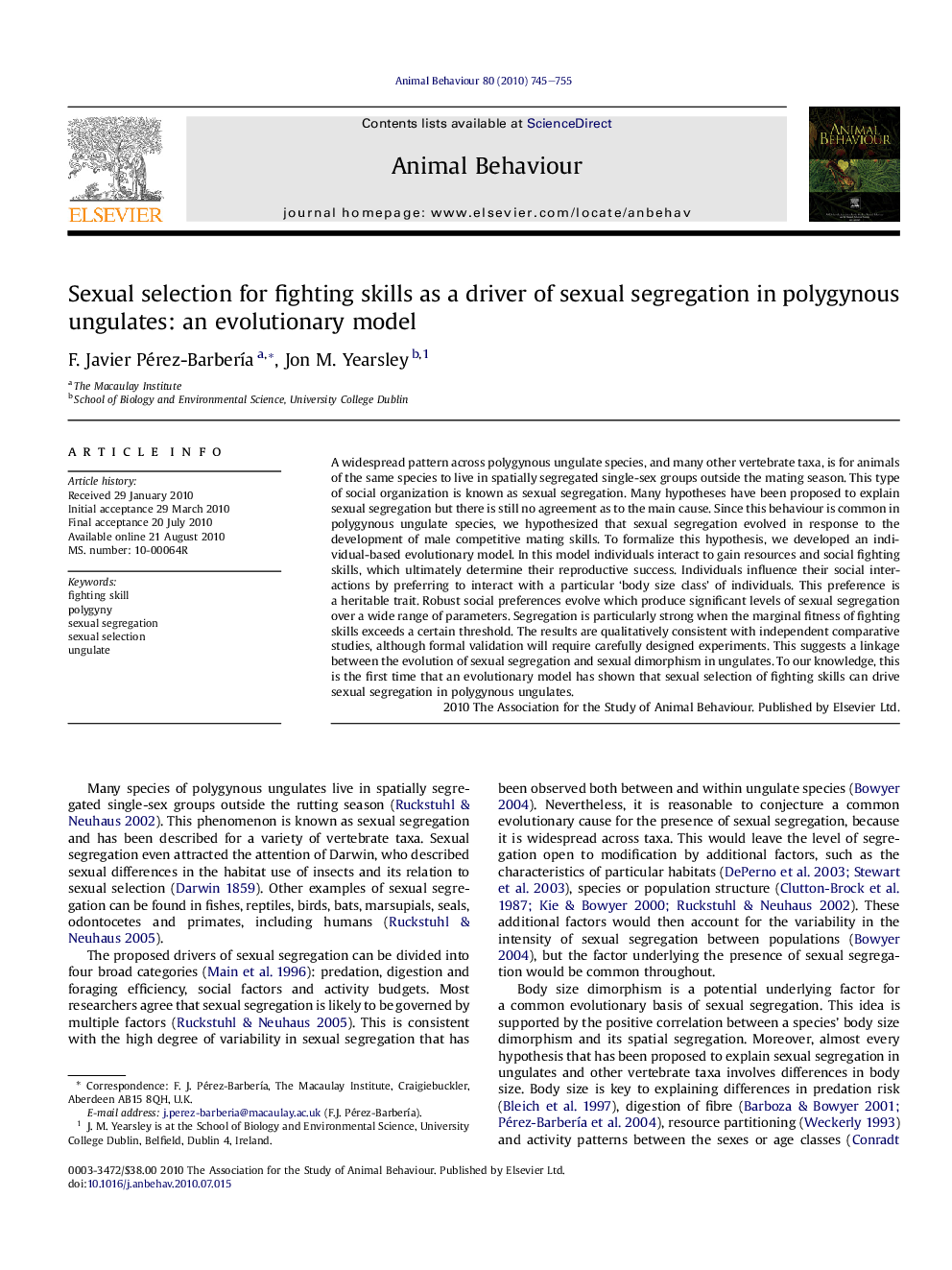| Article ID | Journal | Published Year | Pages | File Type |
|---|---|---|---|---|
| 2417128 | Animal Behaviour | 2010 | 11 Pages |
A widespread pattern across polygynous ungulate species, and many other vertebrate taxa, is for animals of the same species to live in spatially segregated single-sex groups outside the mating season. This type of social organization is known as sexual segregation. Many hypotheses have been proposed to explain sexual segregation but there is still no agreement as to the main cause. Since this behaviour is common in polygynous ungulate species, we hypothesized that sexual segregation evolved in response to the development of male competitive mating skills. To formalize this hypothesis, we developed an individual-based evolutionary model. In this model individuals interact to gain resources and social fighting skills, which ultimately determine their reproductive success. Individuals influence their social interactions by preferring to interact with a particular ‘body size class’ of individuals. This preference is a heritable trait. Robust social preferences evolve which produce significant levels of sexual segregation over a wide range of parameters. Segregation is particularly strong when the marginal fitness of fighting skills exceeds a certain threshold. The results are qualitatively consistent with independent comparative studies, although formal validation will require carefully designed experiments. This suggests a linkage between the evolution of sexual segregation and sexual dimorphism in ungulates. To our knowledge, this is the first time that an evolutionary model has shown that sexual selection of fighting skills can drive sexual segregation in polygynous ungulates.
